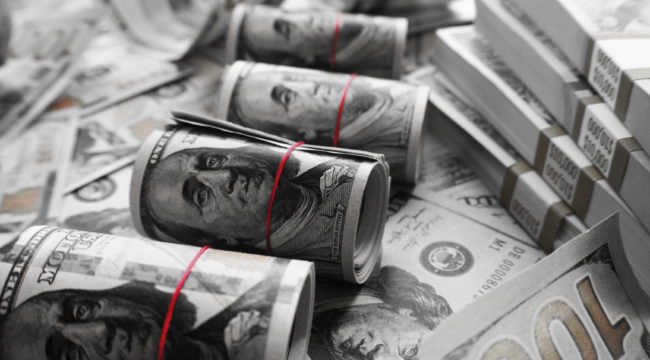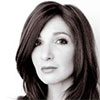The Mystery of "Dark Money"
Donald Trump was onto something when he said during the first presidential debate that “we’re in a big, fat ugly bubble.” Even if he ironically embraces the bubble now that he’s in the Oval Office.
The questions du jour are…
Why hasn’t the bubble popped yet?
And how long can a rigged market stay rigged?
Will the market keep moving higher? Correct? Or will it crash?
And, should everyday investors play the game?
The answers — and the catalyst for this bold new project — lie in two words:
Dark Money.
You know the adage, “It takes money to make money.” That adage has been around for a long time. What’s relatively new, however, is collusion between various governments, central banks and private banks. They work in tandem to siphon off more power and money for themselves using law’s, power-brokering, and quid-pro-quos.
Ultimately, what allows all of this political and financial extraction from Main Street is central bank monetary policy that creates what I’m calling “dark money.”
As the Wall Street Journal has revealed, 60% of the market’s gains between 2008 and 2016 were generated on days when the Federal Reserve made its policy decisions.
That’s dark money in action — together with collusion of central banks around the world.
And according to research done by Brian Barnier of Value Bridge investors and the website FedDashboard, 93% of the stock market’s move since 2008 is explained by the Federal Reserve’s actions.
The authors of the book, Invest with the Fed also write that “the data show that stock returns are approximately three times higher when monetary conditions are expansive than are returns earned when conditions are restrictive.”
Even former Dallas Federal Reserve President, Richard Fisher admitted on the record that:
“What the Fed did — and I was part of that group — is we front-loaded a tremendous market rally, starting in 2009…in order to accomplish a wealth effect.”
And later, he admitted:
“You have to be… frank about what drove the markets…. It was, the Fed, the Fed, the Fed, the European Central Bank, the Japanese Central bank … all quantitatively driven by central bank activity.”
So that age-old adage needs updating. Nowadays, “It takes dark money to make money.”
Since late 2007, the Federal Reserve has embarked on grand-scale collusion with other G-7 central banks to manufacture a massive amount of dark money. The scope and degree of this collusion are unprecedented.
On July 31, 2017, Fischer delivered a speech in Rio de Janeiro, Brazil. He addressed the phenomenon of low interest rates worldwide. Fischer admitted that “the effects of quantitative easing in the United States and abroad” are suppressing rates.
He also said there was “a heightened demand for safe assets affecting yields on advanced-economy government securities.” What he meant was that investors are realizing that low rates since 2008 haven’t been effective at fueling real growth, just asset bubbles.
Remember, Fischer was the Fed’s No. 2 man. He was also a professor to former Fed Chair Ben Bernanke and current European Central Bank President Mario Draghi. Both have considered him to be a major influence in their economic outlook.
The “Big Three” central banks — the Fed, the European Central Bank and the Bank of Japan — have collectively held rates at a zero percent average since the global financial crisis began. For nearly a decade, central banks have been batting about tens of trillions of dollars in dark money.
They have dictated the cost of money and fueled bubbles. They have amassed assets on their books worth nearly $14 trillion.
By producing and distributing artificial money, central bankers distorted reality in global markets.
Since the global financial crisis, the big winners have been the big six U.S. banks that profited from access to dark money.
They used printed money to fund buybacks of their own shares and pay themselves dividends on those shares.
After the Big Six banks passed their latest round of stress tests, they began buying even more of their own shares back. The move elevated their stock prices. The largest U.S. bank, JP Morgan Chase, announced its most ambitious program to buy back its own shares since the 2008 crisis, $19.4 billion worth. Citigroup announced its biggest buyback, $15.6 billion.
The Fed’s all-clear was another version of QE for banks courtesy of the Fed. Instead of buying bonds via QE programs to keep rates down and the cost of money cheap, the Fed greenlighted banks to speculate in their own stocks, creating more artificiality in the level of the stock market. U.S. banks disclosed plans to buy back $92.8 billion of their own stock to say thank you to the Fed for the “A.”
More ominous than that was a clear sign that decades of money-conjuring collusion had helped the same banks that caused the last crisis. Proof came in the form of a letter to the U.S. Senate banking committee from Thomas Hoenig, the vice-chairman of the U.S. Federal Deposit Insurance Corp. (FDIC), the government agency in charge of guaranteeing people’s deposits.
He wrote that in 2017, U.S. banks used 99% of their net earnings toward purchases of their own stock and paying dividends to shareholders (including themselves).
They legally manipulated markets in plain sight by pushing their own share prices up with cheap money availed to them by the central banks that are supposed to regulate them.
The amount of securities the G-3 central banks held on their books, about $14 trillion, was equivalent to a staggering 17% of all global GDP.
Their efforts to provide dark money into the banking system are constantly peppered with cheerleading phrases like “unlimited” and “by all means necessary.” What they are really saying is that they are playing a game with no defined objectives.
Starting with the Fed, central bankers have continued to build policy on the fly. The central bankers’ science experiment has spread beyond financial policy. It morphed into something even Dr. Frankenstein couldn’t have imagined.
Confidence in the Fed and the U.S. dollar (as well as in other major central banks globally) has dropped considerably. Maybe that at least in part explains the explosive rise of bitcoin and other cryptocurrencies?
Even central bankers have admitted that their dark money creation scheme was largely a bust, but not in any official statement.
The fact is, this dark money system is not going away. If anything, it is evolving. The ECB, BOJ and Bank of England are still buying billions of dollars worth of assets per month. And as Janet Yellen, the Federal Reserve chair told a crowd during a recent speech in Washington, “The bottom line is that we must recognize that our unconventional tools might have to be used again.”
What she was signaling is that this era of collusion and reckless monetary experiments are far from over.
When I left Wall Street shortly after 9/11, I blew the whistle on their shady practices. I felt as though my history at the highest level of these firms gave me a privileged position to help everyday Americans and Main Street understand how we’re being pillaged. I channeled my true passion, writing, to communicate what was happening.
I believe those equipped with the right approach, tools and systems can even find opportunity in the world of dark money.
The world runs on “dark money.” Don’t let the insiders have it all.
Regards,



Comments: